November 21 is the Feast of the Entrance of the Theotokos. We Orthodox celebrate this event, when as a small child Mary was brought by her parents to the Jerusalem Temple to be raised among the consecrated virgins in service of God until the time of marriage.
The Temple community, headed by Zacharias (father of John the Baptist), welcomed and nourished her. It’s a commemoration comprised of a glorious morning of Divine Liturgy, accompanied by the previous night’s Great Vespers with Litya.
Such stark contrast to the world, it is. Consider a news item I stumbled upon just a few hours after leaving church: “Playful guide” teaches kids how to conjure demons. Simply called “A Children’s Book of Demons,” it’s marketed to kids ages 5-10 and promises that “summoning demons has never been so much fun.”

This got me thinking about the rise and mainstreaming of Satanism within the pluralistic nightmare known as Murica. Remember the “Hail Satan” prayer that opened a governmental meeting in Alaska a few months ago?
Or what about the Baphomet statue that was erected on the Capitol grounds in Arkansas last summer? Or what about Xochi Mochi, a demon-dressed drag queen who went viral after reading to children at the Michelle Obama Library in California in 2017?
Bet you haven’t heard about The Satanic Temple being accommodated at the U.S. Naval Academy. Despite the name, the followers of the growing tax-exempt “religion” assure us that they don’t actually believe in Satan. It’s all about “reason.”
Maybe this is the “dramatic mix of talent, of all races, religions, backgrounds and genders” that a 3-star general recently touted in pursuance of “diversity as a war-fighting necessity.” I suppose the army of one is more like one nation under Moloch, y’all.

What about Dr. Eric Sprankle, an associate professor at Minnesota State, who is an unabashed member of the Satanic Temple? Honestly, that’s probably not that shocking of a thing coming from academia these days. Heck, it’s probably part of the tenure process at most universities. Or maybe he’s a Navy grad. Hmmm.
But what really makes Sprankle stand out in his evil is that he accused God of raping the Virgin Mary. Seriously.
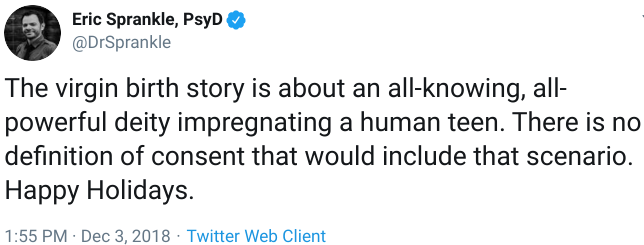
After getting push back, the ivory-tower Satanist, psychologist, and “certified sex therapist” and pervert tweeted this.
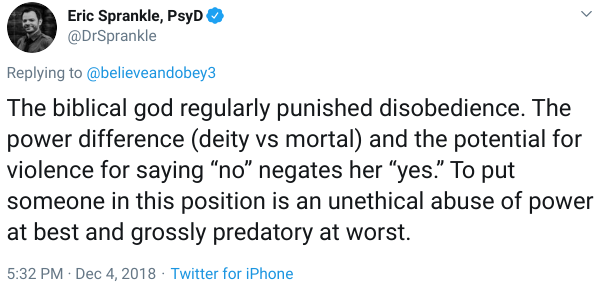
“I’d never force you to be in a relationship with me, but I will destroy you and everyone you love if you aren’t,” Sprankle tweeted as a “proof” of his assertion that God would have punished Mary had she not agreed to bear Christ. It’s obvious that the social-media provocateur has no understanding of biblical history or of Christian theology.
If God were to simply smite people who disobey Him, Sprankle would have already been reduced to ashes.
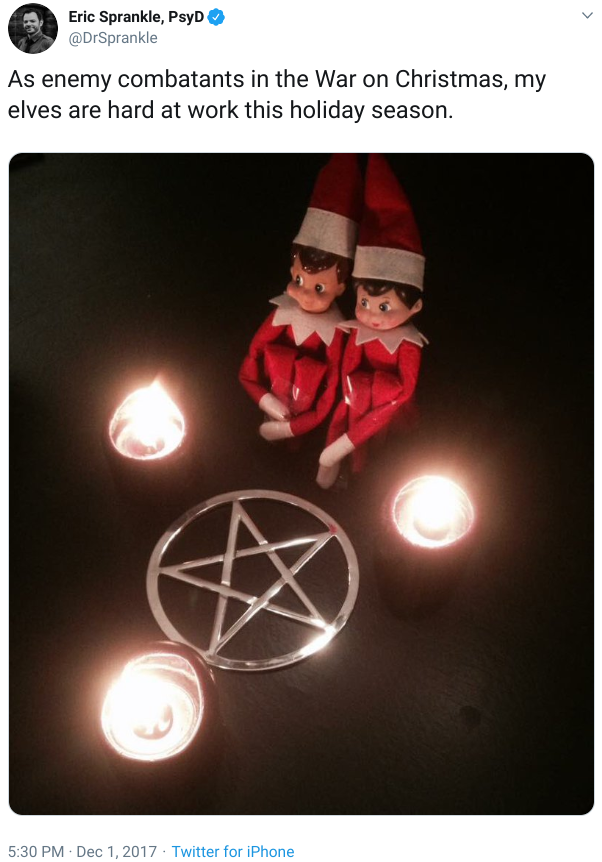
“The Nihilist takes an active role in the work of Satan (for such it is) that can by no means be explained away by the mythology of the ‘innocent victim,”’ wrote Father Seraphim Rose. “No one, in the last analysis, serves Satan against his will.”
Likewise, as Father Peter Gilquist explains, the Lord “will never conscript us apart from our consent. This is why He is called ‘the God of grace’ (1 Peter 5:10). We are to choose freely to obey Him and do His will.”
It turns out that we humans so often smite ourselves because of our own free will. It is our actions or lack thereof which separate us from God and His blessings. Nothing we can do merits our salvation, other than giving Him our entire lives. And this is exactly what Mary did. As the first Christian, Mary is a model for all followers of Christ, which is one of the reasons why we Orthodox consider her the greatest woman who ever lived.
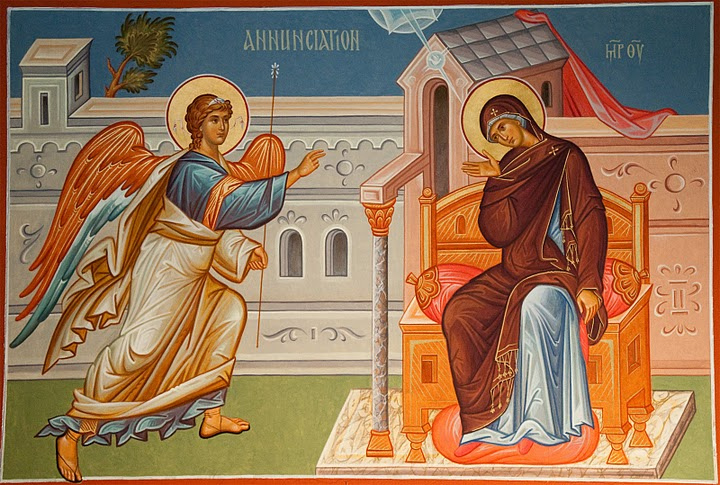
God wants us to be “temples of human flesh” and “God’s first step to that end was His dwelling in the flesh of Mary, for through Christ He came to dwell in her womb, living in her body as He once dwelt in the Temple.”
It’s not just ill-informed, hardhearted elitists like Sprankle who dismiss, degrade, or downplay Mary. Billy Graham once admitted, “We evangelical Christians do not give Mary her proper due.” I used to hear about “Mary worship” often in my years as a Protestant.
By contrast, it’s common to see in an Orthodox parish an icon of Mary with arms stretched out as the Christ child is emblazoned before her (as seen in the architectural picture at top). This reverent image is often even placed on the apse, the center of the wall just beyond the Royal Doors of the iconostasis (the altar screen) and directly above the altar where the Eucharist is prepared.
We Orthodox magnify her during every Divine Liturgy when we sing “The Hymn of the Theotokos,” describing her as “ever-blessed and most pure.” And our reference of Theotokos is Greek for “God-bearer” or “Birth-giver to God.” At the Third Ecumenical Council in 431, this title was given both to honor her, as well as to emphasize that her Son was both fully divine and fully man.
How awesome is that?! Although not the source of the Godhead, the Theotokos literally carried the Creator of the cosmos in her womb. And she did so while remaining undefiled. So logically, how can one be raped if she is still a virgin?
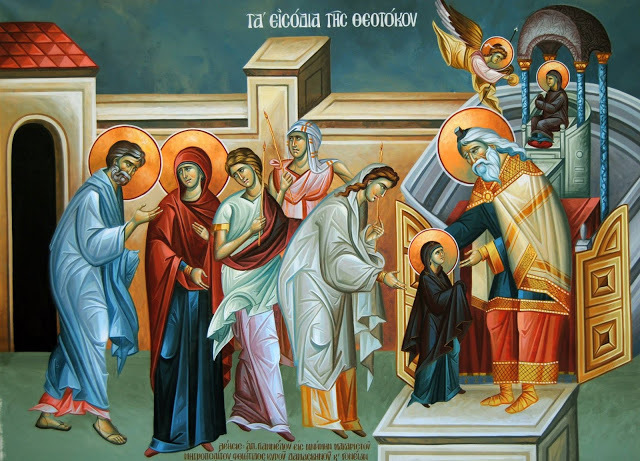
We also believe that Mary herself became the “the living Temple.” In the Orthodox hymns we’ve sung over the past two days, we say she was the “hallowed Tabernacle, the living Ark, that contained the Word who cannot be contained.” We joyfully pronounce that the Theotokos has “become the divine Throne of the Master of all, His palace, His resting-place, and His dwelling filled with light.”
As the “Receiver of Divine Light that no man can approach,” Mary contains the power of God – an immense, overwhelming, and mystifying force that previous Old Testament heroes could not even tolerate seeing. Thus, she becomes a “spiritual Lamp” to give light to those who “sit in darkness of ignorance.” She is the “Queen of all” who has “opened the Kingdom of Heaven to us.”
Just as Eve, who the brainless feminists claim was “framed,” was the mother of the Adamic race of humankind, the Theotokos has become the mother of the Body of Christ: we the Church. She was the vessel which held the New Covenant.
Americans dishonor so many things that actually matter – like marriage, the family, agape love, parenthood, childhood, modesty, chastity, true charity, self-control, patience, biology, selflessness, miracles, ancestors, roots, tradition, and history – yet we choose to show reverence for the worldly and nihilistic “purity tests” which utterly please Satan.
Why not nurture yourself in the purity of the Theotokos? She was a living sanctuary to the Son and she can be ours, too. I pray we all willingly turn away from the many chains of darkness that bind us from every quarter of our dying culture. I pray we choose the light and freedom offered to us by Christ. Mary did it, and so can we.
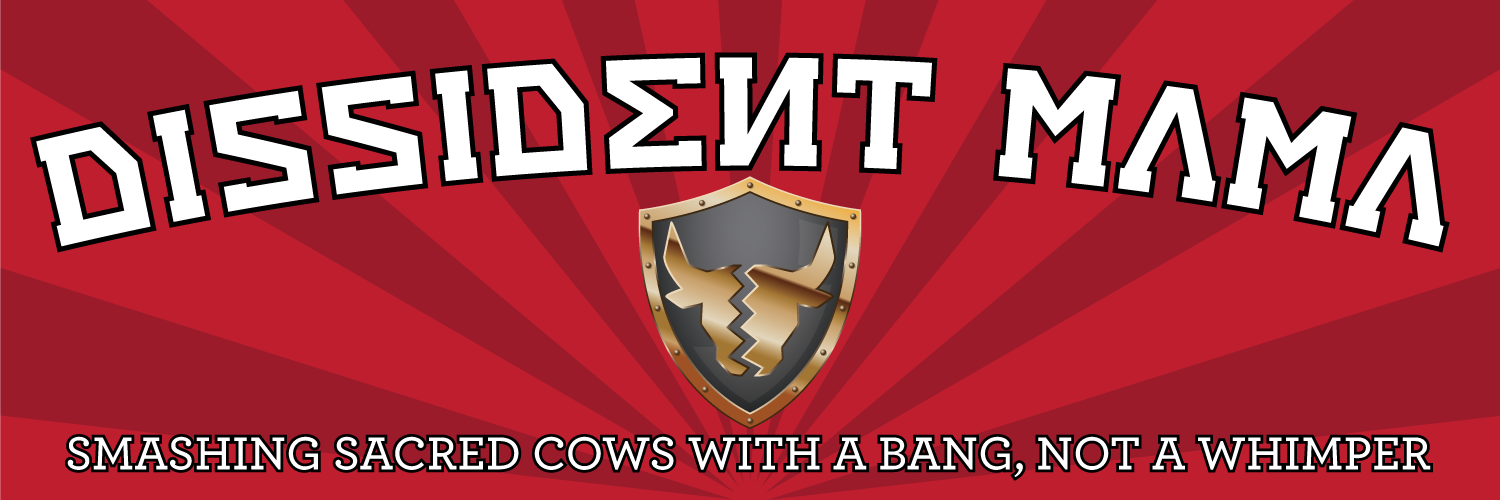
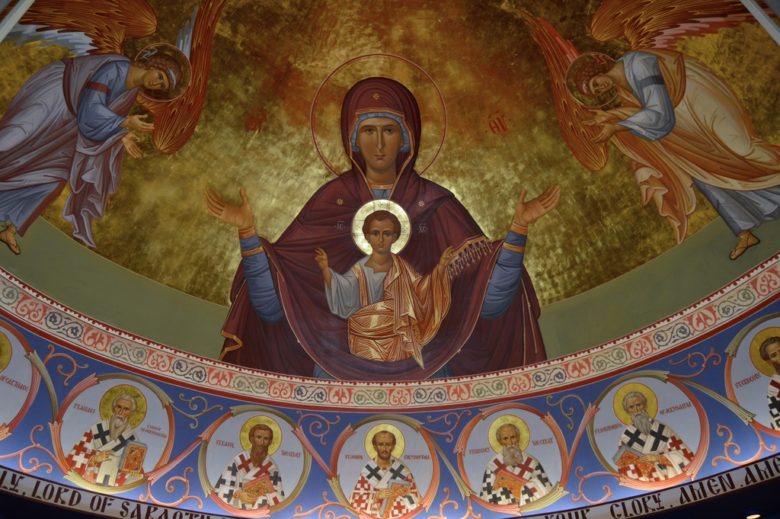

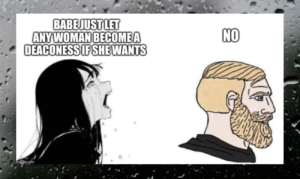
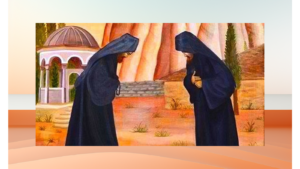
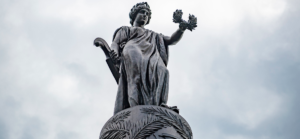
Comments
The author is a very learned person,I can tell. Such facility in discussion and expression are necessarily based upon an authentic excellence in learning and understanding. Otherwise,such excellence in dissertation could not be. I enjoy these articles because I have never known anything about Orthodox Christianity. Now,maybe I know a little bit. Also to encourage such courage amidst a generally hostile social environment,I send the author a single,one-time-only monetary donation of modest proportions. Perhaps there might be an article about the ” Great Schism of 1054 [?] ” . I never ever have known what that was all about. Points of theology ? Or,things much more mundane,so characteristic of the Church of Rome – power , influence , control , revenues ? As I understand it,up to that point-of-time in History,both Romanism and Orthodoxy were recognized and accepted as being ” catholic and universal ” . Keep up these good articles,so far elevated in quality above most of the stuff on the WWW.
I hate to call you “a1b2y25z26,” so I shall call you Steve. 🙂 So thanks for the compliment, Steve!! I’m an Orthodox newbie myself – just got chrismated in December 2017 – but I love learning about the ancient
faith, its deep history, profound theology, and beautiful liturgy and traditions. Going to church really is a sanctuary for me – something it never, ever was before. It’s life-giving and hope-regenerating, and such a
joy to know that other Orthodox around the world are hearing the same hymns, celebrating the same saints, and coming to the Chalice together with my family and me. In our divided world, there is actually unity, if we actually stop to see it.
We Orthodox do have our fair share of problems, though (we are comprised of humans after all) and we certainly are not exempt from leftist creep and even outright PC activism sometimes, but as the Orthodox saying goes (or at least the Southern Orthodox I know say), if it ain’t dogma, it ain’t dogma. Period. You can believe whatever freaky-deeky you like, but if it contradicts dogma, it’s heresy. If it doesn’t, have at it … but don’t expect the bishops to change liturgy just to please you and your pet ideology.
I would like to write something on the Schism eventually. And being that Orthodoxy may have another very historic schism occurring soon (it has to do with some inside baseball but pretty juicy stuff regarding the Greek Orthodox, the Ecumenical Patriarch in Constantinople, NATO, and the Catholic Church), I will broach it all eventually as I become more learned on the complicated but globally important topic(s).
Thanks again for reading and I look forward to your support, both monetary and otherwise. God bless!
Look what I just found, y’all. Traditional Catholics: what the hell is going on here? Lord have mercy!
The guy in white hat is supposed to be Archangel Gabriel and the girl in jeans is supposed to be Blessed Virgin Mary at Annunciation. I don’t like this. Sacrilegious. pic.twitter.com/O3RLwigM0o
— Dr Taylor Marshall 🔥 (@TaylorRMarshall)
November 26, 2019 “>Look what I just found, y’all. Traditional Catholics: what the hell is going on here? Lord have mercy! <a href="
https://platform.twitter.com/widgets.js“>
Interesting DM. I too know nothing about the Orthodox Church. Is it the same as Greek Orthodox and Eastern Orthodox? What is your “conversion” story to Orthodox? Are there good introductory reads out there for someone like me just wanting to know more?
A quick search on amazon gave me this:
https://www.amazon.com/Orthodox-Church-Introduction-Eastern-Christianity/dp/014198063X/ref=sr_1_2?keywords=The+Orthodox+Church%3A+An+Introduction+to+Eastern+Christianity&qid=1575392165&sr=8-2
Really have no idea though.
Thanks,
Stephen
Yes, Orthodox means “Eastern Orthodox,” basically what remained of Christianity after the Great Schism in 1054. This is when Catholicism and the Pope became a thing, and what remained was generally speaking in the East in the Byzantine Empire. Constantinople was its main hub, not Rome. It’s a very cool and complicated topic, which I will blog about one day. But for now, know that most (but not all) parishes that have the word Orthodox in them (with a capital O) is part of the Church. That would include the Russian Orthodox, the Greek Orthodox, the Antiochians, the Serbs, the Romanians, the Albanians, the Bulgarians, etc., and we all fall under different jurisdictions headed by bishops, but that larger body of canonical churches is in communion (meaning will participate in the Eucharist with one another) also with the Coptics, I think, and something called the Western Rite: former Catholics who didn’t want to fall under the pope. It’s a lot of inside baseball, but the gist is that we must all share dogma and general liturgical practices. For instance, we are not in communion with Catholics, since there are some big dogmatic differences with them, nor with Protestants, since there are little to no similarities therein. Also, it sounds super-ethnic, which it can be and I honestly have no problem with, but I could go to a Greek parish even though I’m not Greek, and my parish – which is in the Orthodox Church of America jurisdiction and has lots of non-ethnic-ish (you know, American white folk) converts from both Catholicism and Protestantism – has a smattering of ethnic folks, specifically Russians and Romanians. Orthodoxy is dying in the Northeast, where it once flourished due to high-levels of immigration from the East, but today the kids and grandkids of cradle Orthodox just aren’t attending liturgy in the numbers they used to. But before the 20th century, Orthodoxy originally came to America by Russian missionaries through Alaska – with the exception of Philip Ludwell III who lived in Virginia in the 1700s and was the first known convert to Eastern Orthodox Christianity in the Americas!! – and then moved its way down the West Coast. Alaska still has a sizeable Orthodox presence and so do a few big cities, like San Fran and LA, but I don’t think it’s really growing out there. Where it is growing and thriving is the South. Personally, I think it’s because of our history living in this “Christ-haunted land,” as Flannery O’Connor called Dixie, and that we yearn for a relationship with God more than do people in other parts of these United States. And because Catholicism, in my opinion, has become too liberal and post-modern since Vatican II, and Protestantism is (for the most part) too touchy-feely, always changing and “reforming,” and simply not dogmatic enough to keep progressivism at bay, people are in search of authenticity and foundational truths. In the eyes of the Orthodox, its Church is virtually unchanged because it relies on apostolic succession, tradition, ancient rituals, Church history, and of course, dogma as guiding forces. This podcast was one of my early intros to the faith, so I recommend it as a starting point. But there is wealth of info and that book you found I’m pretty sure is a good source, as well. And that’s the great thing about Orthodoxy: there is ALWAYS something new to learn, even for cradle folks, because it such a deep, rich, and historic faith. If you want more suggestions after the podcast, I’ll offer up a few. In the meantime, beware of Public Orthodoxy, The Wheel, and Orthodoxy in Dialog – all leftist websites pushing progressive politics and sometimes even outright heresy. God bless, Stephen. Hope this helps. 🙂
Speaking of “always something new to learn,” a friend just recently pointed out to me that we are not in communion with the Coptics, who I now know don’t believe in the Trinity. The Eastern Orthodox broke communion with them and their fellow Oriental Orthodox all the way back in 451 at the Council of Chalcedon. I was confused because we used to have Ethiopian Orthodox who attended our parish and I knew our bishop has allowed priests within our diocese to commune with those from Oriental Orthodoxy. But turns out, that’s just some good ol’ ecumenism for the sake of “unity.” Live and learn.